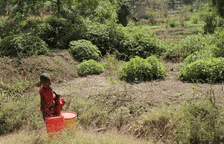Yesterday, the 2012 World Water Week began. This annual conference in Stockholm, Sweden is the planet’s largest gathering of water-related scientists, managers, NGO leaders, and multilateral organizations. This year’s conference lies in the shadow of the coming due 2015 due date for the Millennium Development Goals related to water and sanitation. As such, the dominant conversations center on what goals and targets will galvanize the world past 2015.
The primary water goal, MDG 7, subtarget C, was achieved this past spring as the world achieved and surpassed the target of giving close access to an improved water source to at least 89% of the world’s population. Unfortunately, over the 20 years of providing these water sources, the incidence of diarrheal disease remained unchanged—meaning childhood death due to diarrheal disease, the inspiration for this goal, was not impacted.
A key reason for the lack of improvement is the unmet MDG for sanitation. The world still requires adequate access to toilets and hand washing facilities. Second to sanitation is the need to monitor the so-called improved water sources for contamination. The focus on providing water sources has inadvertently supported shallow wells—statistically, 60% of shallow wells are contaminated within a year of their installation. The human right to water is not fulfilled unless a strategy for monitoring the water source for contamination is in place.
At the time of the goals’ writing, monitoring water sources was not financially possible because a monitoring strategy required a microbiology lab and technicians to run it. In recent years, water monitoring technology has flourished.Currently, two—possibly three—inexpensive water monitoring technologies are arriving on the market or are in pilot stage. Many* of the technologies harness the recent advances of mobile phones and cloud-based connectivity to replace the capital-heavy microbiology lab requirement that previously prevented MDG 7c from including a target for contamination monitoring.
Moving forward to the post-MDG world, water researchers and managers will be considering “last-mile” steps—the carefully articulated policies required to make all the collective hard work of the past 20 years achieve a lasting impact. Sanitation and water quality still dominate the agenda. Technology offers a new hope.
*Disclosure: the author is the co-founder of mWater.Co, an emerging water monitoring technology platform
